Since its beginning in 2001, Adult Swim has established itself as one of television’s most unique and inventive programming blocks. Since Mike Lazzo established the block to achieve Cartoon Network’s goal of attracting older audiences, the word “experimental” is key when describing these shows.
This particular genre has produced some of animation’s most weird and mind-bending content in the 20 years since its beginning. In addition to that, Adult Swim has demonstrated that it can host a wide range of unique live-action entertainment.
Teenagers and adults looking for anime, cartoons, and live-action adventures traditionally like Cartoon Network’s gritty late-night hour. Among its diverse and impressive repertoire are a number of hits including Rick & Morty, Family Guy, and Robot Chicken.
But over the years, this block has also seen a lot of programmes come and go, frequently within a year or two. Despite the fun, creativity, and interest they offered, many of these shows were replaced with new ones along the road.
Harvey Birdman, Attorney At Law
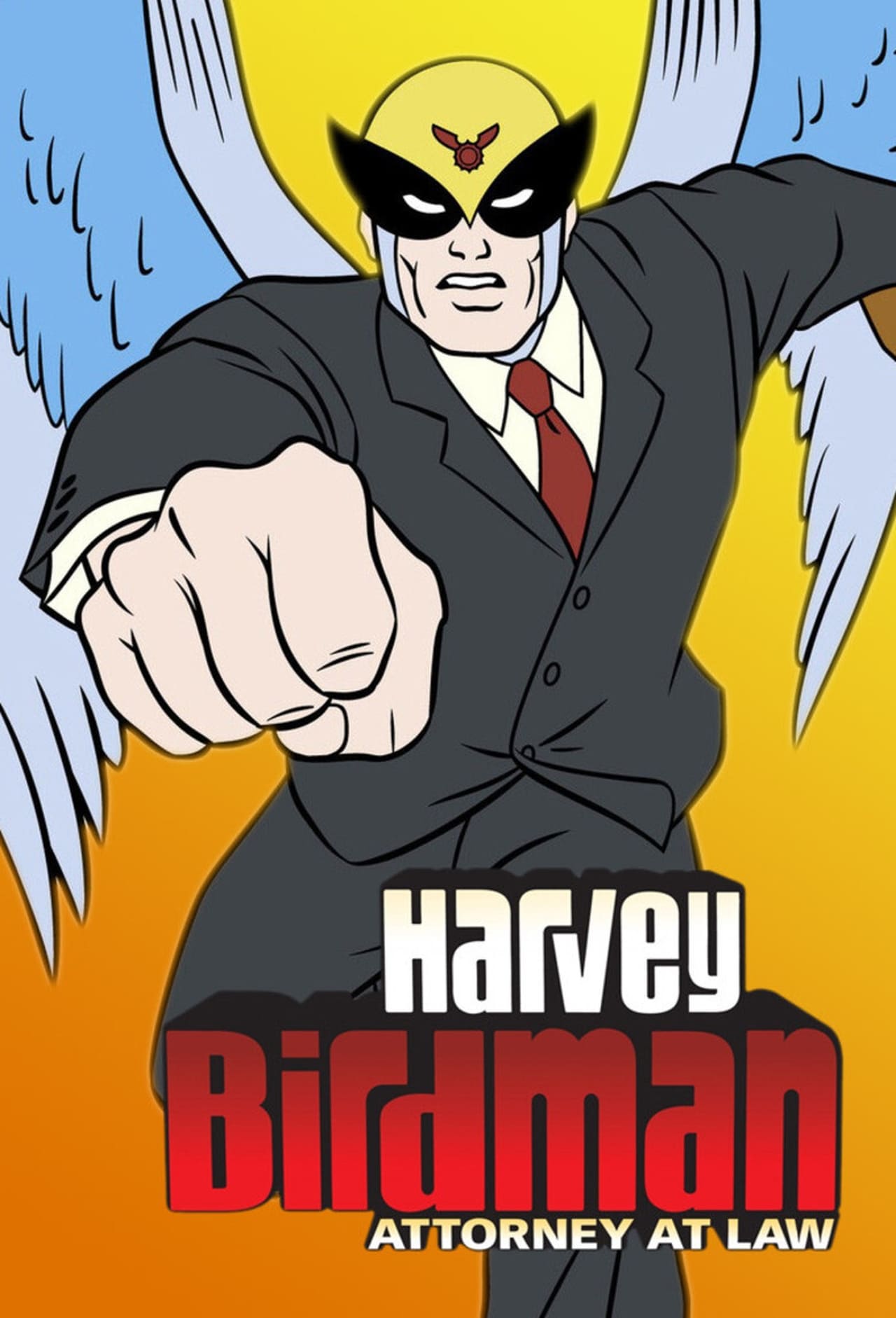
In its early years, Adult Swim’s trademark program Harvey Birdman, Attorney At Law contributed to the development of the network’s distinct personality. Space Ghost: Coast to Coast, Harvey Birdman, and Sealab 2021 all breathed new life into dated cartoon ideas that had been lying around collecting dust.
In the fifteen years after Harvey Birdman, Attorney at Law ended in 2007, Adult Swim has become much more ambitious. The plot of this superb animated comedy revolves around the antics of Harvey T. Birdman, a third-rate lawyer who takes cases that no one else wants, and the law firm Sebben & Sebben.
Birdman, a former character from “Birdman and the Galaxy Trio” by Hanna-Barbera, collaborates with other Hanna-Barbera animation stars from the 1960s and 1970s. Many of his opponents from “Galaxy Trio” appear in this program as lawyers and are frequently seen as lawyers who support the opposing side of a particular case.
Without a question, “Harvey Birdman: Attorney at Law” is one of the best Adult Swim shows ever produced. The show adopts an adult viewpoint on the Hannah Barbera characters, which is very unexpected and startling. Because of how well the stories are written, there were multiple times when we laughed aloud.
The characters in this show are compelling, the voice actors are top-notch, and all of the components work together to make it entertaining and original. The opening episode, “Bannon Custody Battle,” hooks us in and keeps us watching all the way through.
The uniqueness, weirdness, and unusual comedy subgenre of this show—possibly some of its best traits—make it a fantastic all-time viewing. Harvey Birdman, Attorney General moves quickly while offering a constant stream of visual humor. This show attempts to confuse and disorient you for a large portion of what looks to be a fever dream. It is a delightful vibe that, at the moment, is unique to Adult Swim.
Sealab 2021
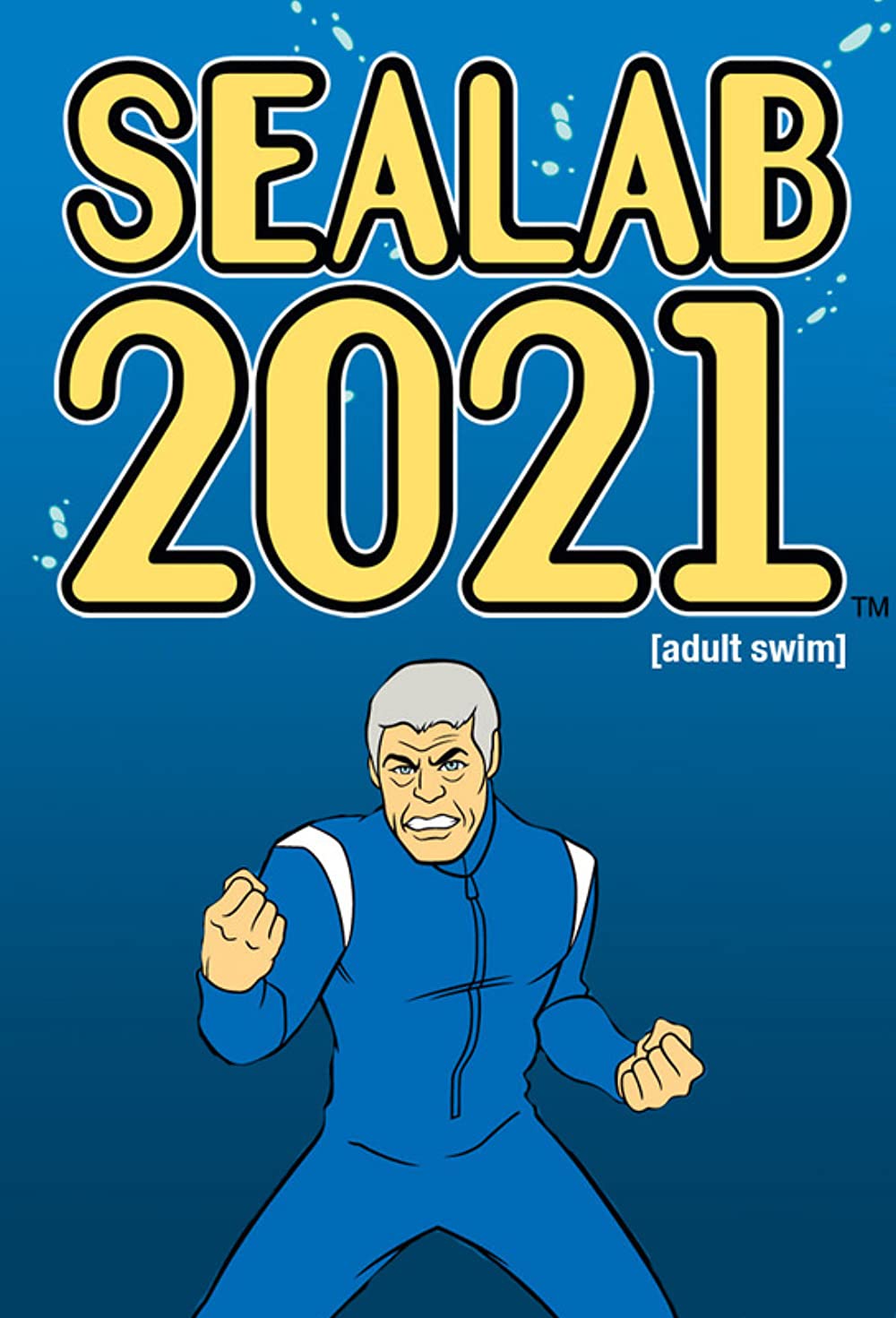
With a mix of explicit jokes and surrealist comedy, Sealab 2021, like its contemporaries, helped to create the early character of the Adult Swim block. It, like “Space Ghost” as well as “Harvey Birdman,” made funny use of classic Hanna-Barbera materials, in this instance the one-season undersea adventure program “Sealab 2020.”
Matt Thompson and Adam Reed, the eventual creative geniuses behind “Archer,” would make their series debut with this series. In many respects, “Sealab 2021” represents the birth of the duo’s signature style of snappy, self-aware dialogue laced with surrealist comedy. If you like “Archer,” you should certainly check out this show to discover where the creators originally made their impact in the field of animation.
Sealab 2021 is a drama about an often-doomed underwater colony and its inhabitants, who despise one another. The multi-national scientific outpost Sealab is manned by a motley team of misfits and screw-ups who are unsuitable for employment in the commercial sector. They don’t do any research and instead waste their days squabbling amongst themselves, or simply having a bit of fun. The crew has twisted its unlucky captain, Captain Murphy, into compliance, and are happy to work for the government, raking in huge, hazardous-duty salaries.
Though it may appear dated now, this Mature Swim classic was ahead of the times with its adult comedy and surreal goofiness. Sealab’s penchant for prioritizing funny babbling above visual flare helped lay the groundwork for many adult comedies to follow. Sealab demonstrated that substance trumps aesthetics by using repurposed footage from an unknown Hanna-Barbera show from the 1970s.
What makes this program so fantastic is that the segments are not structured in any way. Anything that may happen usually does happen, whether the crew members are hitting each other with sticks, the Captain is giving his Gremlin-esque pet “Gloop” whiskey, which causes it to reproduce, or Sealab is attacked by the “Bizarro” crew. Adult cartoons don’t get much better than this.
Frisky Dingo
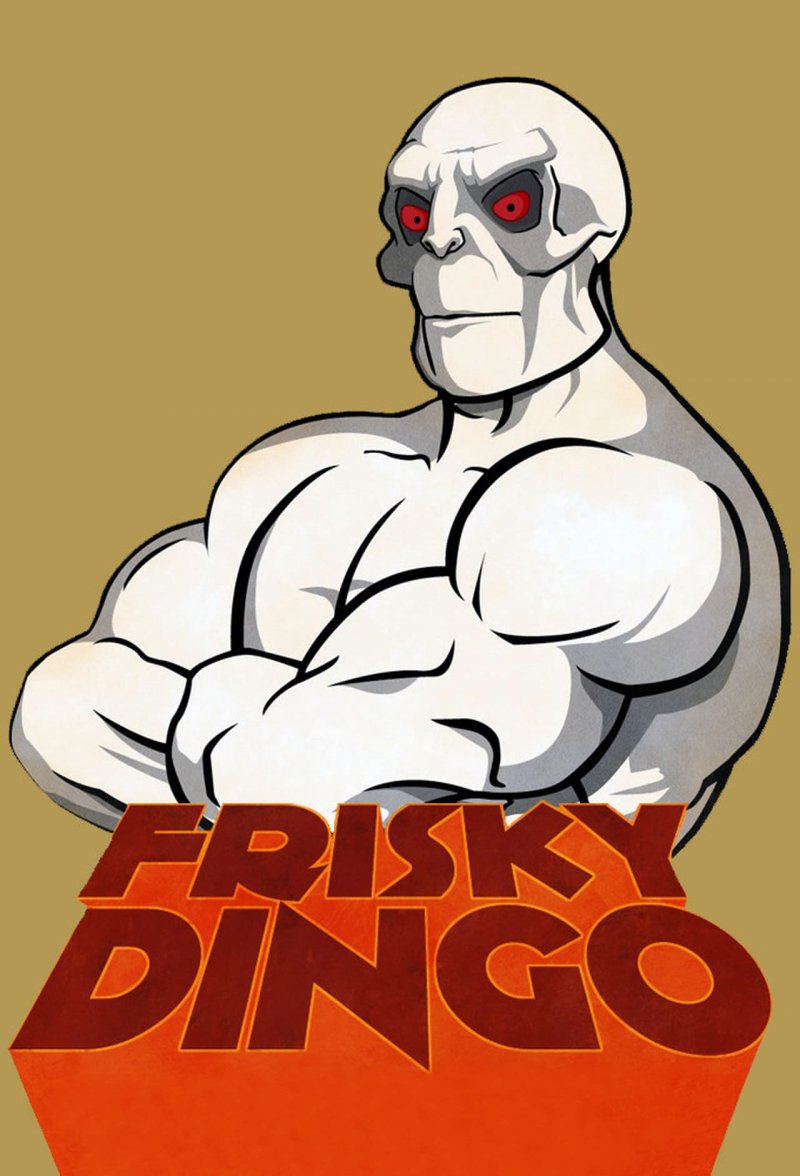
Adam Reed was in charge of some of TV’s most strange shows long before “Archer” reached the airwaves. He not only created “Sealab 2021,” which was one of the original Adult Swim series, but he also created “Frisky Dingo.” This brief program involved Killface, who was a villain, as well as Awesome X, a hero, both of whom were played by Reed himself. Killface is an albino humanoid who is about seven feet tall and is always trying to destroy the planet with his ridiculous Annihilatrix contraption.
Awesome X, or millionaire Xander Crews, Killface’s antagonist with a propensity for outlandish gadgetry and over-the-top antics, is equally insane. “Frisky Dingo” is a show that is mainly based on ludicrous events that are frequently accented with extremely human responses. This aesthetic would be carried over to Reed’s next big effort, “Archer,” which went on to make a few oblique connections to its strange predecessor. This program was devoid of any sense of realism, permitting it to essentially run wild.
The comedy in this show is erratic and insane, frequently delightfully vulgar and shamelessly violent. Characters are frequently killed unexpectedly, and the storylines and speech are all highly stream-of-consciousness. The program is so hilarious and constantly quotable that it will leave a mark in your memory.
“Kakow,” “Boosh,” and “We can never go back to Arizona!” will soon become part of your everyday vocabulary. Frisky Dingo, was a show that had a flair for mimicking action movies and Bond films and drew inspiration for its concept and colorful ensemble from superhero movie tropes. Because the program only lasted 25 episodes, the fascinating adventures of these heroes appeared to contain a lot of potentials that wasn’t entirely realized. With Marvel’s cultural appeal at an all-time high, a revival of Frisky Dingo would seem very fitting.
https://www.youtube.com/watch?v=PJpBus8shFo
Metalocalypse
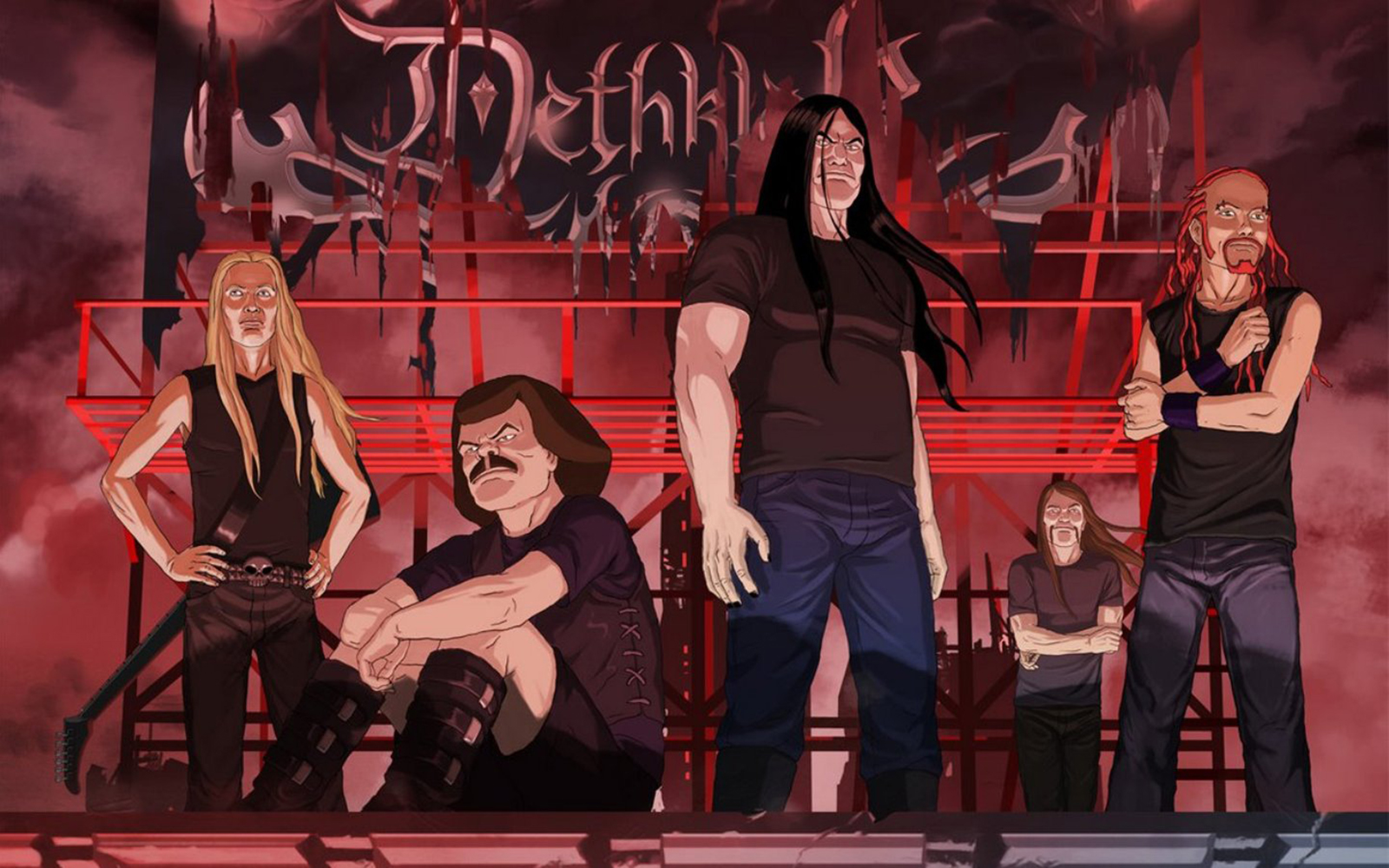
This adult cartoon series tells the story of Dethklok, the world’s most prominent death metal band. The series is a satire of the heavy metal subculture. With so much black humor in the piece, the music is serious business. Most episodes contain music created by guitarist and creator Brendon Small, which is attributed to the band.
The animation is frequently meticulously timed to the music, with the chord locations and fingering of the guitar strings depicted in detail. It aired 61 episodes and one special throughout its tenure. Adult Swim, their original network, aired four seasons. Death Clock Metalocalypse was the original title of the series. Because the moniker “Death Clock” was already taken, it was renamed Dethklok Metalocalypse. To avoid ambiguity, the title was reduced to Metalocalypse. The loud, ostensibly serious style of heavy metal appears to be ripe for satire.
If you appreciate caustic and weird comedy and are a die-hard metal enthusiast, “Metalocalypse” is probably right up your alley! It’s essentially all over the top-heavy metal album covers brought to life, in the greatest manner imaginable. Throughout the four-season course of the program, the band battles with rabid fans, murder attempts, and their very own idiocy.
This show’s parody of rock music adopts a Spinal Tap style, but it’s laced with sinister images and a perverted style of humor to match. It’s so immensely funny because it takes five extremely well-defined characters exemplifying traditional metal traits and makes them down-to-earth, easily approachable, and simply waiting to screw up badly in just about everything they do.
No matter how good or ill-intentioned their non-metal actions are, they inevitably magnify the tragedy of everyday human experience. We’re simply waiting to know what the death toll will be like when we sit and watch. Adult Swim has been mourning this musical spoof and the wacky shenanigans of Nathan Explosion as well as his crew since its unexpected conclusion in 2012.
Home Movies
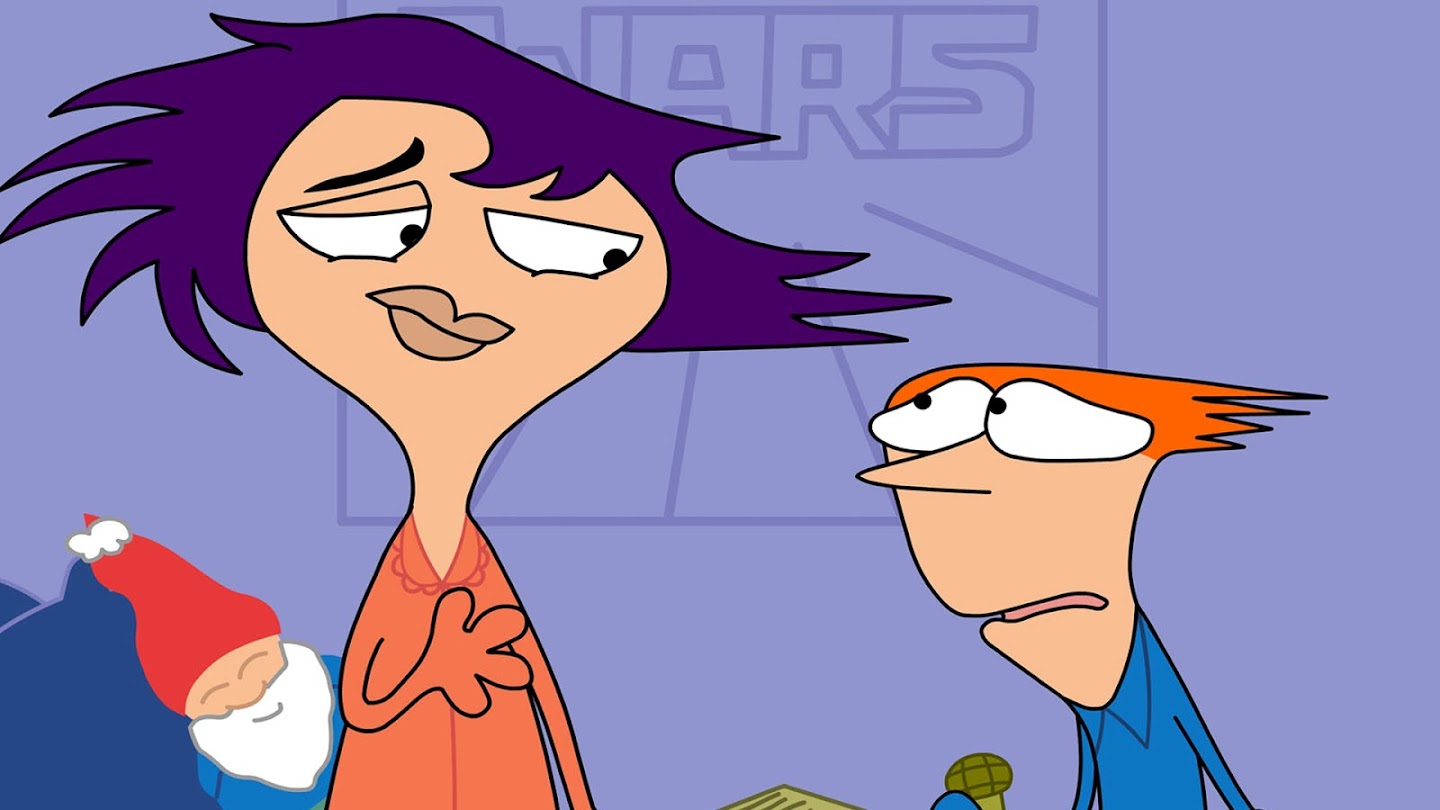
Some animated programs use the medium to display otherworldly sights and concepts, while others take a more realistic approach. The late ’90s/early 2000s cartoon series “Home Movies,” produced by Brendon Small with Loren Bouchard, was one that embraced the latter. The sitcom is unusual in that it features Brendan, a latchkey youngster with divorced parents named after the co-creator. Brendon aspires to be a filmmaker, a desire he pursues with tenacity alongside his buddies Melissa and Jason. Brendan is guided along the way by his busy single mom, Paula, as well as his alcoholic football coach, John McGuirk.
Though it does not quite hold the power of animated comedies like Family Guy and Rick and Morty, this minimal comedy provides plenty of amusing and endearing scenes throughout the duration of its early two-thousands run. Home Movies stands apart with its interesting characters and a distinct animation style reminiscent of Dr. Katz’s “Squigglevision.”
The use of spontaneous dialogue in the program gives it a laid-back atmosphere and hilarious unpredictability that others would go on to mimic in the future. Given the popularity of series like Bob’s Burgers, which was developed by Home Movies creator Loren Bouchard, this show appears to be ripe for a revival.
The program is an appreciation of childhood’s seemingly boundless potential. It’s a small treasure that demonstrates that simple is best. Among the slapstick, yelling, and wonderfully basic two-dimensional characters lies a play on morality and a well-formed character comedy. A work of honesty – gently hilarious, clever, and completely rewarding – this program is well worth the time it will take to develop an appreciation for it.
The Oblongs
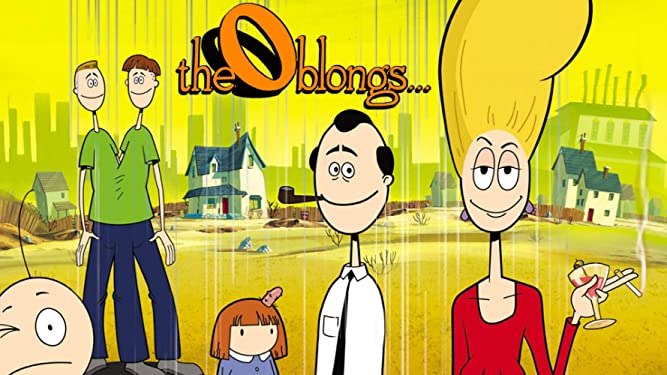
Sometimes the premise of a program is so strange and ingeniously gonzo that it has to be seen to be appreciated. The first run of “The Oblongs,” like “Mission Hill,” would be brief, but it would make a new life on Adult Swim. The story follows the fictional Oblong family, an authentic nuclear family living in a poverty-ridden valley village.
It is a witty comedy satire of society’s evils and presents the unusual yet loving world of a strange yet caring household of have-nots who reside in a polluted valley and cannot seem to escape the class structure of the beautiful people who dwell up on the hill.
The characters in the animated series were developed by novelist Angus Oblong. The family is dealing with severe physical abnormalities and mutations caused by the garbage of the Hills, a rich suburb. This includes the dad, Bob Oblong, a man who was brought into the world without limbs or legs, and the conjoined twins, Biff and Chip.
The dialogue is full of keen, quirky wit. The program does not rely only on gross-out jokes. Every episode has a few lines that make you laugh and tell you that the authors’ goals aren’t only to push the envelope. Milo’s, his friends’, and most other characters’ simple, rounded, and enjoyable character design, bright colors, great vocal casting, and a general sense of innocence, offset what surprises the program carries with effective contrast.
This has all the makings of a fantastic cartoon: it’s irreverent and humorous, and all the characters are designed so bizarrely that you can’t help but chuckle even when they’re not talking. Underneath their veil of coarse, but often extremely witty, humor, the program manages to depict a wide variety of human emotions. If taken literally, some may find the show to be wildly unpleasant. It takes some getting used to the Oblongs, but once you do, you can embrace it for its humor.
The Brak Show
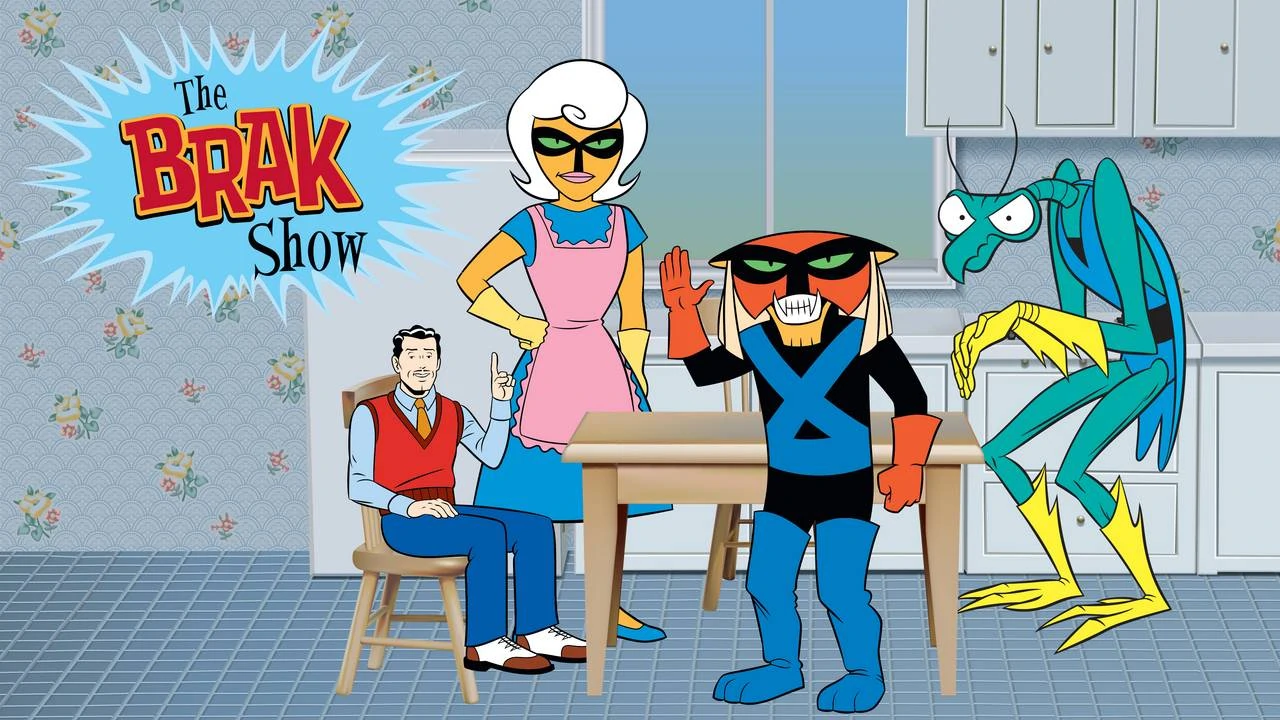
Adult Swim’s business model has always been to show entertainment that walks a fine line between innovation and outright lunacy. This has been the case from the network’s inception, including the popular “Space Ghost Coast to Coast” as well as its several spin-offs. “The Brak Show,” dubbed after Brak, a recurrent protagonist from “Space Ghost” played by Andy Merrill, was one of these spin-offs.
The series, like its forerunner, “Space Ghost Coast to Coast,” was a late-night foray into surreal humor presented with Hanna-Barbera-style visuals. Unlike “Space Ghost Coast to Coast,” which was a surreal discussion show, this show positioned itself as a strange variation of a suburban sitcom.
This premise, like “Aqua Teen Hunger Force,” would rapidly fade into the background in favor of more genre-bending stories. Brak, the oblivious space pirate who is also a part of the Space Ghost cartoons, stars in the program. He goes through all of the classic comedy scenarios with his pal Zorak. Brak’s parents, brother Sisto, and next-door neighbor Thundercleese are also along for the ride.
Although not every joke succeeds in making us laugh, this is a pretty funny, surreal spin on every horrible ‘Leave It To Beaver style family TV sitcom. It’s a tremendous jump from season one, which was entertaining and unusual, to season two and three, which reached nearly Monty Python-like levels of utter senseless, hysterically comic craziness. Throwing aside any attempt at making logic and letting all the rules be broken results in something that could have been created if Dali and Bunuel had collaborated on a cartoon as adolescents.
Mike Tyson Mysteries
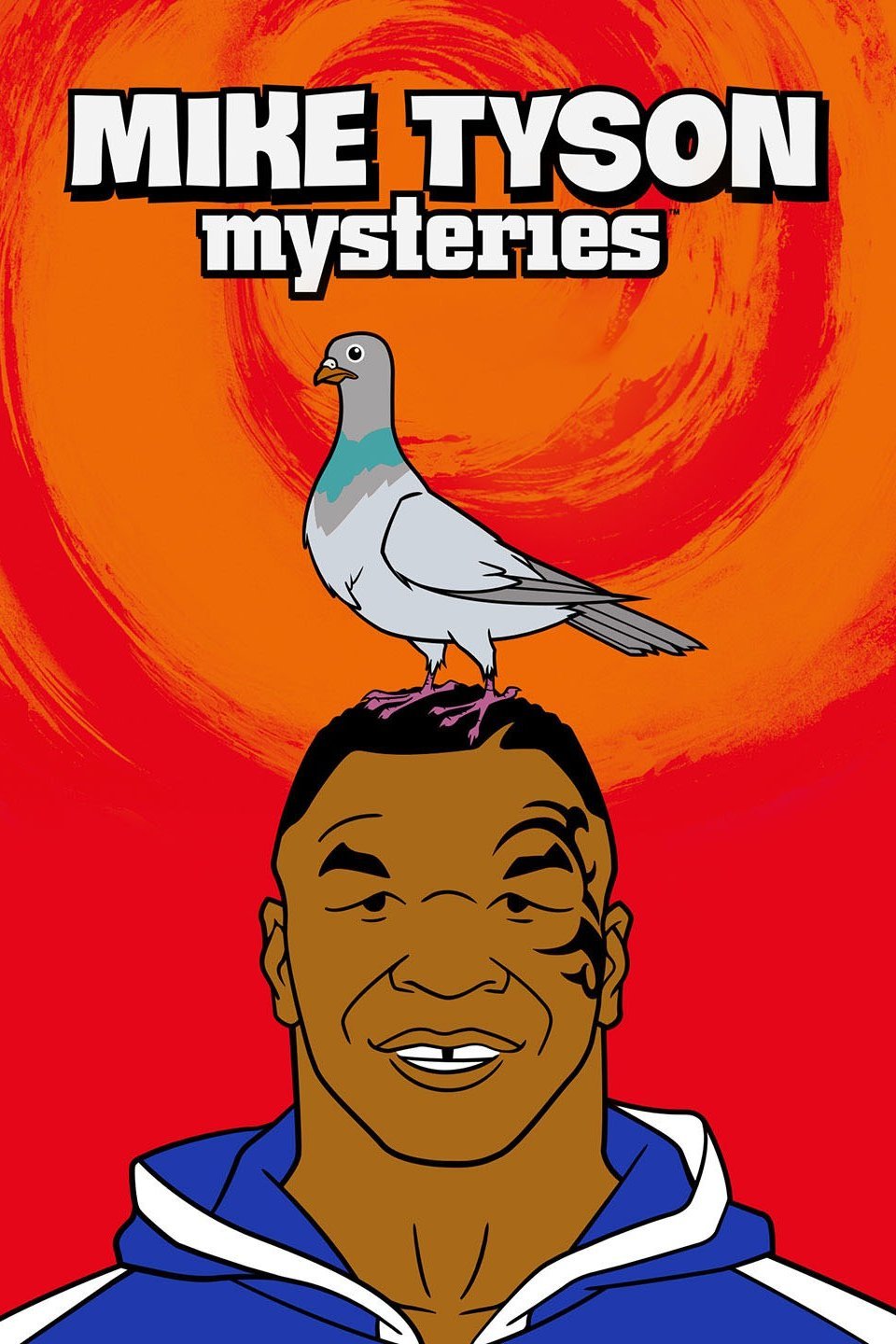
Few would have imagined former boxing champion Mike Tyson as the Hanna-Barbera-style superhero he is in Mike Tyson Mysteries, however, after his Mike persona frees Bobby Fischer’s brain from an IBM computer and lays bare a legion of business tycoon robots whose commander is voted out of authority by shareholders while crying out “the singularity, people!” Adult Swim’s savvy becomes blessedly clear.
Iron Mike’s crew handles problems given to them by carrier pigeon in the quarter-hour cartoon series. Mike’s adoptive Korean daughter Yung Hee, the spirit of a Marquess of Queensberry, and a filthy, intoxicated pigeon – dubbed Pigeon — who was once a man, make up the crack squad.
Tyson, for his part, is not merely an addition to the series’ humor; he is vital to it. He makes fun of his lisp by frequently mispronouncing phrases, including his daughter’s name, whilst his character wears an outrageous tracksuit and crops up with several half-baked, yet sophisticated, ideas.
The show defies its silly premise by having a dramatically new mystery every week. Although the program is not about the amazing storyline or brilliant storytelling, the authors appear to make an effort not to make the series monotonous from week to week.
One episode may be set in space, while the next might be about monsters, or something equally ludicrous. The program never loses sight of the fact that it is a cartoon for adults who don’t mind childish, immature, or odd comedy. Mike Tyson himself is the biggest surprise in “Mike Tyson Mysteries.”
Tyson is definitely in on the fun and appears to have no limits on what elements of his lifestyle he will poke fun of. Tyson is definitely involved in the content, and his comedic timing is substantially superior to what one might expect. As amusing as Tyson is in this role, he pales in comparison to Norm MacDonald’s Pigeon, an alcoholic, vulgar, sardonic pigeon who lives with Tyson.
Superjail!
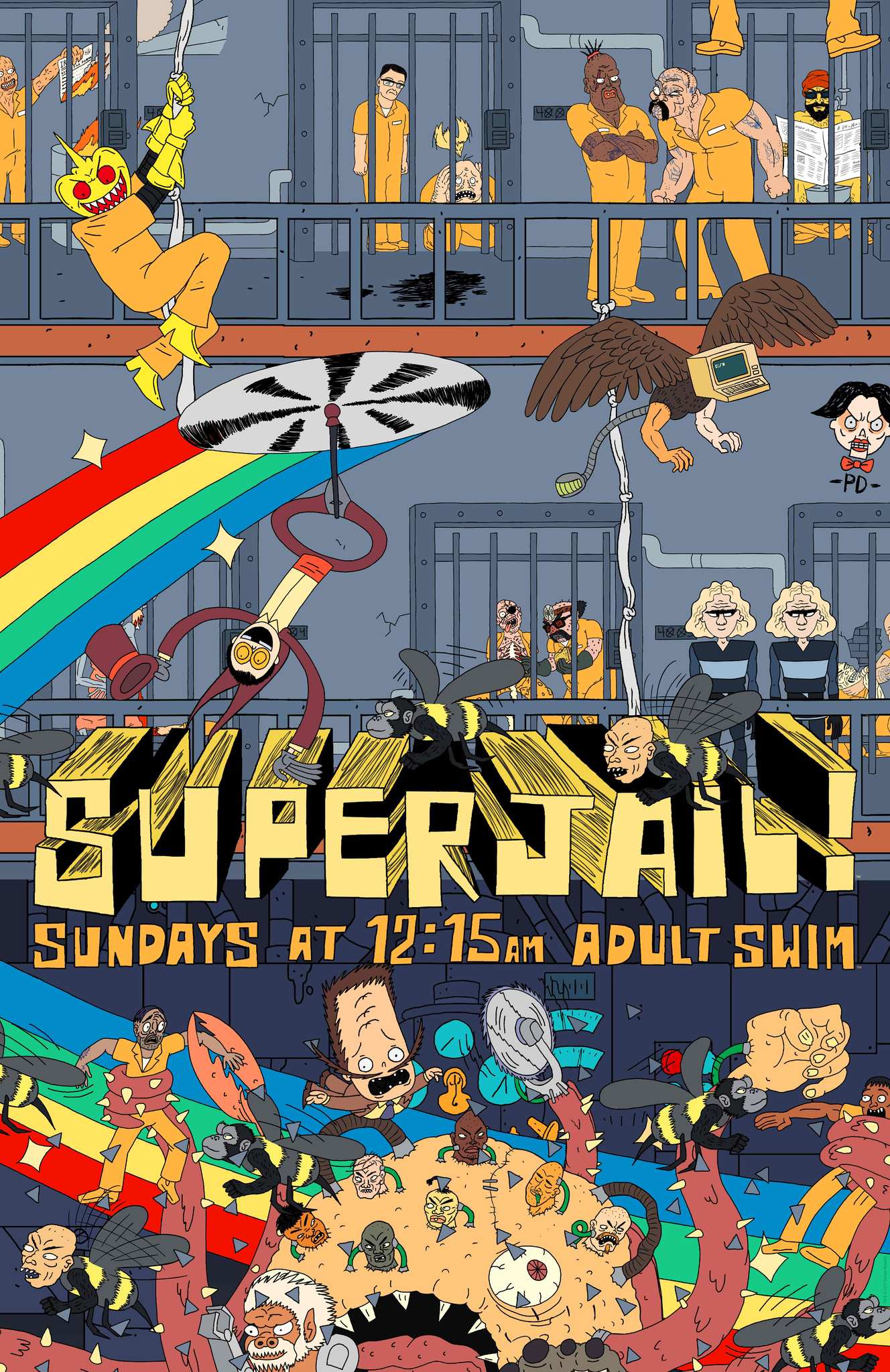
Nowadays, it appears that the most amusing and cartoonish animation productions are set in prisons. There’s Usavich, a Japanese CG series, and now Superjail, which is an Adult Swim original. The series’ idea is straightforward: Superjail is a high-security prison complex controlled by a deranged Willy Wonka-style warden trying to “master the art of incarceration.” He is assisted by a tomboyish guard named Alice, a drunken accountant named Jared, and a punitive robot named Jail-bot. Anything goes beyond this basic setup.
It’s a stream-of-consciousness free-for-all that’s exhilaratingly inventive yet also sure to offend. Superjail has a degree of cartoon vileness that would make even Basil Wolverton squirm. Mike Judge, alternative comics, Yellow Submarine, and Wes Archer’s iconic short Jac Mac & Rad Boy are thrown in there in bits and pieces. The end result is grungy and raw; genuine cartoons by real cartoonists, free of the on-model fuss and overcautiousness that plagues the majority of today’s TV animation.
Superjail is possibly one of the few rare works of animation that renews our trust in the mainstream animation industry. At first sight, it appears to be an odd contender for greatness: after all, it is a Flash-animated program for Cartoon Network’s Adult Swim. Superjail, even then, manages to exceed all expectations, for both Flash as well as Adult Swim.
Far from the average Adult Swim genre of characters flapping their lips, this show exploits the fact that it’s animated, loading up every scene with outrageous visual gags, incredibly funny drawings, frenzied animation, bright colors, and enough wanton cartoon thuggery to fill a million Popeye shorts. The episode also disproves the myth that Adult Swim productions are badly animated due to their low budgets. It’s great to see a program that puts its resources back into the screen and provides fans with high-quality entertainment.
Stroker And Hoop
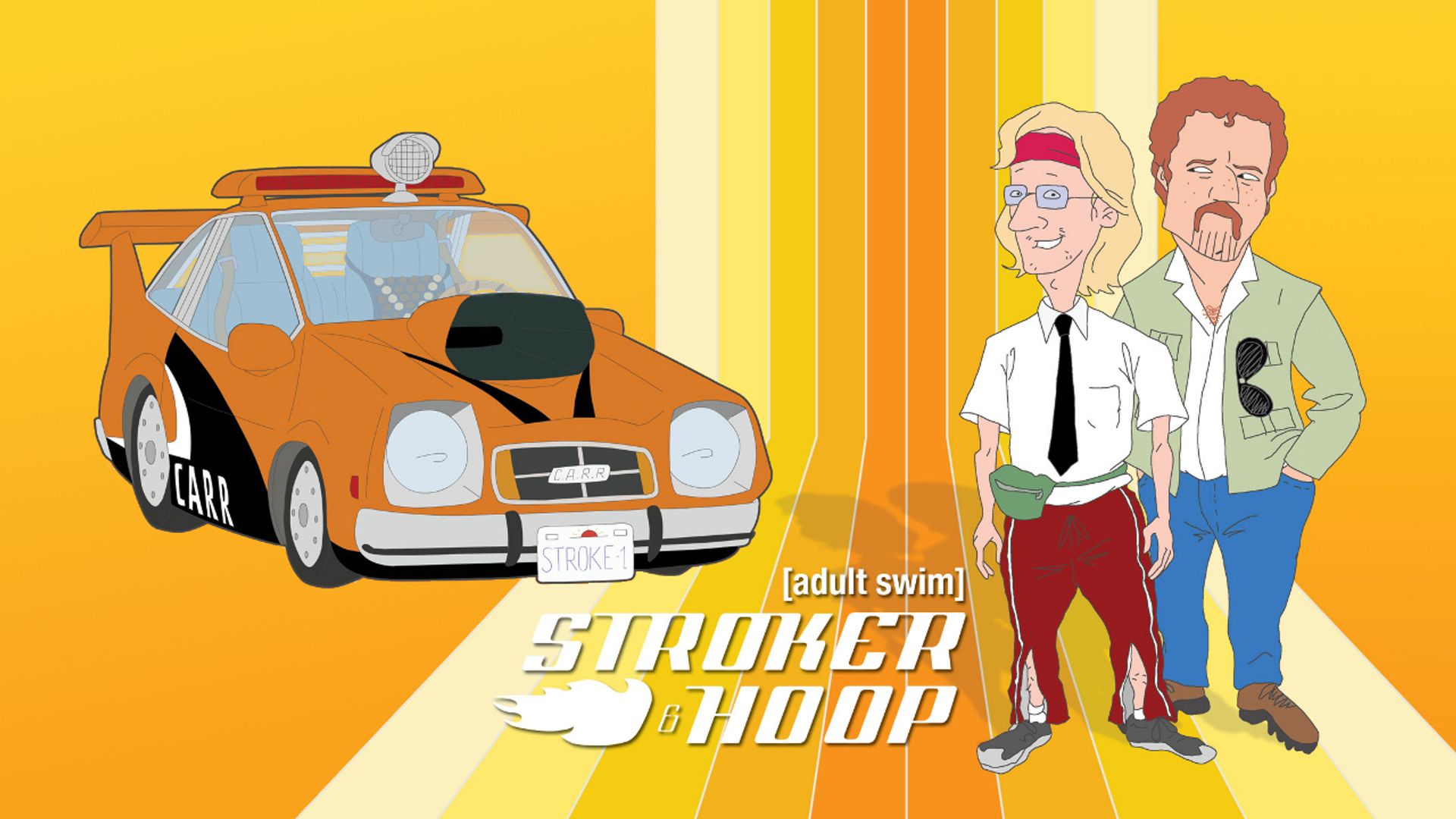
Williams Street started to branch out with some really original material after developing a multitude of amazing new series for their adult-rated animation block, Adult Swim. Stroker and Hoop stood out from the rest of the Adult Swim material at the time, but it was discontinued after one season.
The program was a buddy cop spoof in the style of Starsky and Hutch, with a splash of Knight Rider and a sprinkle of Burt Reynolds thrown in for good measure. John Strockmeyer, as well as Hoop Schwartz, were unskilled private investigators who took cases from people who couldn’t afford better services. C.A.R.R., a sentient car modeled after K.I.T.T., assisted them in solving their cases.
Double Wide, an oddball mechanic, and a coroner named Coroner Rick, rounded out the cast. Unfortunately, the program only lasted 13 episodes, with not a single flop among them. In their quest for justice, the team frequently caused a slew of collateral damage. Finally, someone attempted to go after them for retribution. Unfortunately, the program was not renewed, therefore it ended on a cliffhanger.
This is a fantastic program to unwind and enjoy. All of the show’s characters are enjoyable since they add fresh components to each other and it’s a great mix. The stories are unique and will keep your interest. It’s a fantastic cartoon with endearing characters. combining a creative use of pop culture allusions, satire, and dark humor with a distinct, independent animation design, professional-level voice acting, and wit that stands apart from pop culture and satire. Stroker and Hoop presented fans of Adult Swim’s adult cartoon block with a brilliant, humorous, and innovative series that would’ve been a considerably better choice to keep on air for a few more seasons.
Assy McGee
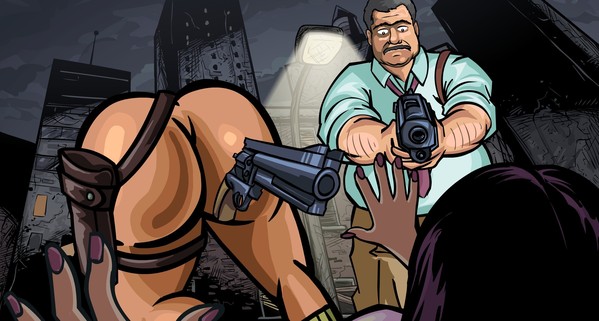
Adult Swim shows aren’t known for their subtlety, so it’s no shocker that Assy McGee is just about as blatant as these series go. Assy McGee sticks to the obvious gags and strikes all the expected notes. Assy McGee’s plot is simple, intricate, and irrelevant all at the same time.
All you need to know is that there is a butt named Assy McGee who works as a detective at the cop headquarters and is a total jerk. I mean, he’s truly a literal butt. Each episode lasts around 10 minutes and features Assy as he tries to solve a case, generally against the orders of his commander.
Besides that, every episode is riddled with predictable ass jokes. Assy often farts at random, smells, and generally acts like an ass. Much of the hilarity revolves around the premise that he is a literal butt. Surprisingly, not one of the characters ever admits that he is literally an ass, instead of commenting on his demeanor as a complete ass.
Assy McGee is obviously remarkable for an Adult Swim animation, which is notorious for being explicit and crass. Mostly because it’s completely out of the blue premise. If coarse humor is your thing, Assy will definitely appeal to you. Assy McGee has a distinct art style that exudes Noir and Grunge in every scene.
The series is definitely dark. The choice of art style contributes to the rough and frequently unpleasant crudeness of the show. It works incredibly well and gives Assy an artistic center, which may connect with some and repel others based on first impressions. This aesthetic flair distinguishes Assy from the rest of the Adult Swim roster.
Tom Goes To The Mayor
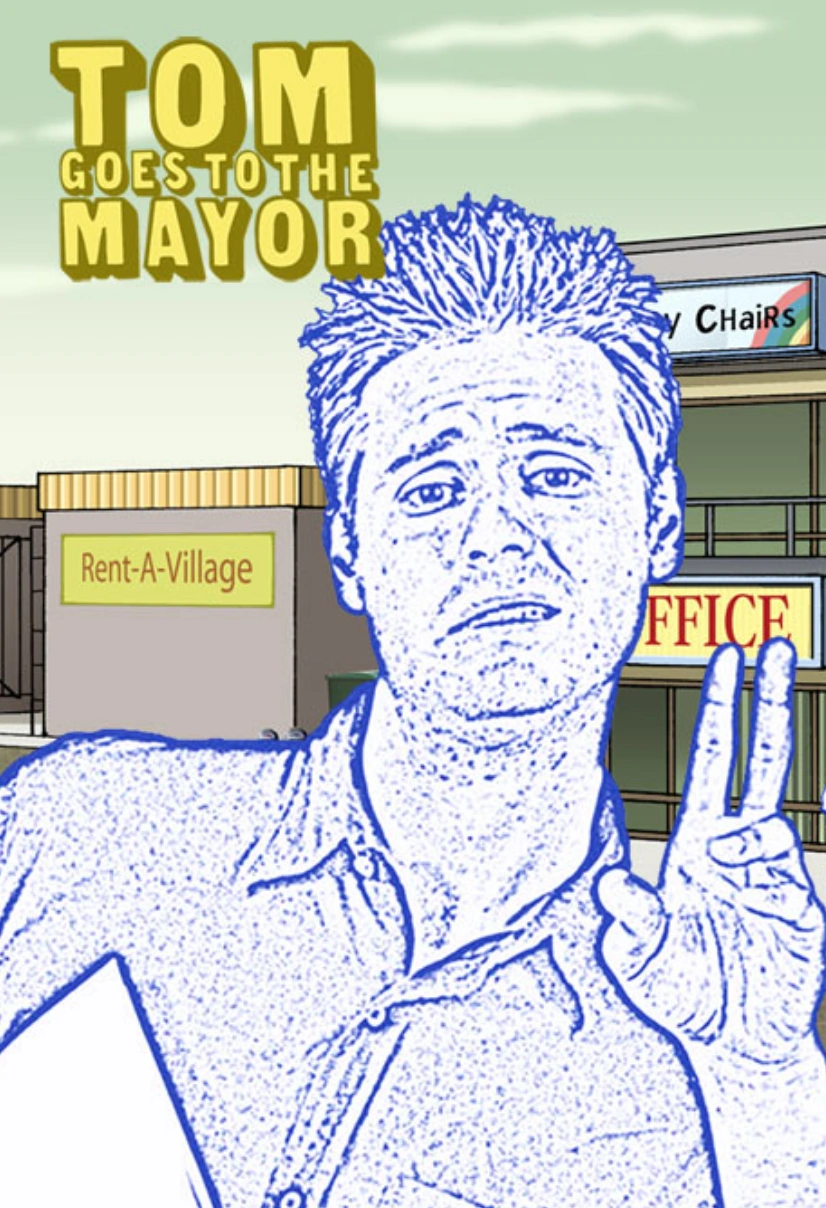
Tim Heidecker as well as Eric Wareheim, two of contemporary comedy’s most prominent personalities, would use “Tom Goes to the Mayor” as a creative springboard. As Heidecker stated in an interview with People, the series began as a crude online comic on the duo’s site and caught the interest of Bob Odenkirk. Odenkirk sensed potential in their webtoon and decided to join as a producer to get Adult Swim to notice it.
The show revolves around the titular Tom, portrayed by Heidecker, who presents different proposals to the mayor, who is played by Wareheim. Most of the time, the mayor will take the concept in his own troublesome route, resulting in nonstop madcap mayhem.
It’s an odd program that combines live-action, animation, and photography in a highly artistic style, and at moments it appears on the verge of devolving into sketch comedy. It manages to be both conventional and freeform at the same time, which demands some explanation.
Tom Goes to the Mayor features a straightforward aesthetic, with flat white and blue cutouts of characters glued over full-color backdrops. The additional features show that the simplicity is deceptive; a lot of effort went into making the appearance of each frame just perfect.
The fact that the animations are sparse does not imply that it needs less effort because anything that is present has to explain itself more than in other programs where everybody is moving all the while and motion is passively absorbed by the viewer.
The program, like the duo’s later ventures, was divisive, with equal parts ardent followers and critics. However, there’s no disputing that the program helped launch their incredibly successful and still enduring careers in entertainment. If you enjoy Tim and Eric’s style of wit, watch this program to discover where it all began.
Mission Hill
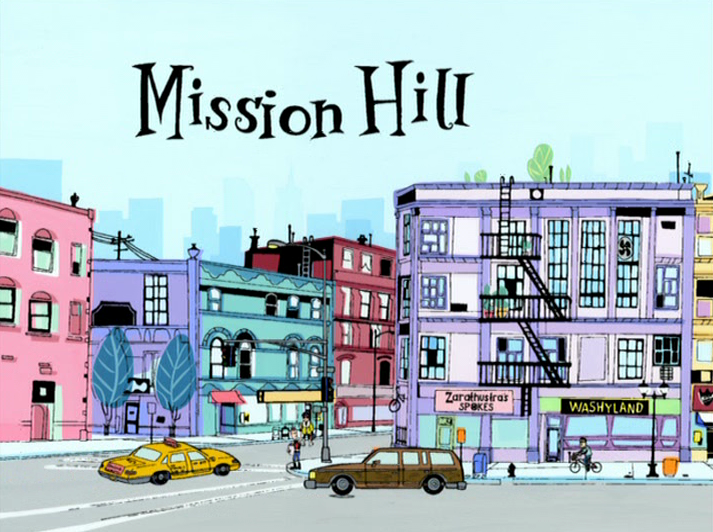
Adult Swim has a history of resurrecting sitcoms that have been canceled, most notably “Family Guy.” The short-lived “Mission Hill ” was another series whose cult reputation was cemented after running on the late-night schedule. Many people will find this show immediately appealing since it illustrates the frequently turbulent era that many younger folks go through after college.
The sitcom, developed by Bill Oakley with Josh Weinstein, follows twenty-four-year-old Andy French throughout his daily life. Andy’s post-graduate lifestyle is thrown into a loop when his parents inform him that his younger brother Kevin wishes to live with him. Andy’s loft mate Jim Kuback, a tall ginger with a penchant for all things electronic, is also present in the show. Mission Hill was a program about the problems of compromise set in an unknown city similar to the likes of Boston, San Francisco, or New York City.
The sitcom was called “the hipster version of the show “The Simpsons” by The Brag, which is a reasonable judgment given that Oakley and Weinstein were both previous writers for “The Simpsons”. It would also receive a lot of attention for being among the first network series to depict a gay mid-aged couple kissing on-screen.
The sitcom was regrettably canceled during its first run on The WB, but it found new life on Adult Swim. With its cryptic references, sometimes drug humor, and wonderfully basic and realistic narrative lines, the show’s humor is simply fantastic because it caters to wayward young folks riffing on pop culture. The characters were personable and unique, with no bothersome clichés or stupid stereotypes. The jokes were brilliant and humorous. The voice casting was quite decent, and the music was very catchy.
Moral Orel
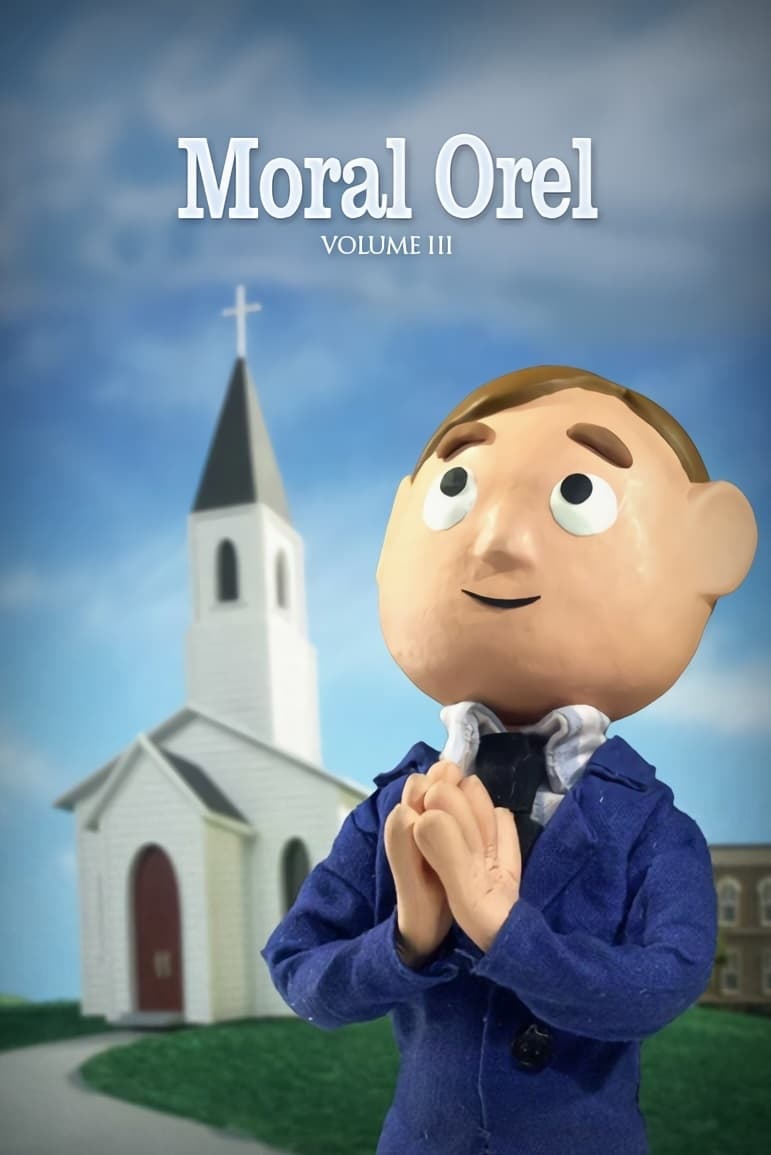
“Moral Orel” is a creation of Dino Stamatopoulos, who has previously written and acted in a variety of TV projects and subsequently appeared as Starburns on the show “Community.” The program “Moral Orel” is Stamatopoulos’ tribute to 1950s comedies, which frequently preached and excessively idealized, wholesome family virtues. The show centers on 12-year-old boy Orel Puppington, whose devotion to conservative Christian principles frequently causes conflict for people around him.
Orel spends most of his time in the fictitious town of Moralton, accompanied by his always chaotic family and a cast of fascinating individuals. This parody of the claymation program Davey and Goliath reinforce the premise that satire frequently makes for the finest entertainment. With its twisted, edgy comedy hidden under a sweet, innocent veneer, the program borrows a page from South Park’s playbook. Moral Orel thrives at mocking conventional American ideals, religious extremism, and social conventions.
“Moral Orel” immediately sticks out among other Adult Swim programs owing to its usage of stop motion graphics. The animation style of the program has been extensively likened to “Davey & Goliath,” despite Stamatopoulos telling Vice that the two had little in common. Throughout its four seasons, the show evolves from a sarcastic satire to an astonishingly depressing viewing experience.
The internal workings of many characters are seen in a very dark light, resulting in a succession of disturbing revelations. This storytelling method made the show’s production stressful –- Stamatopoulos said to TV Squad that 3 of the first season’s episodes were momentarily postponed due to network standards and regulations. Check out “Moral Orel” if you’re looking for something really unique and unashamedly dismal. Moral Orel merited more time in the spotlight than the few years it had, given its distinct aesthetic appeal and sophisticated humor.
Minoriteam
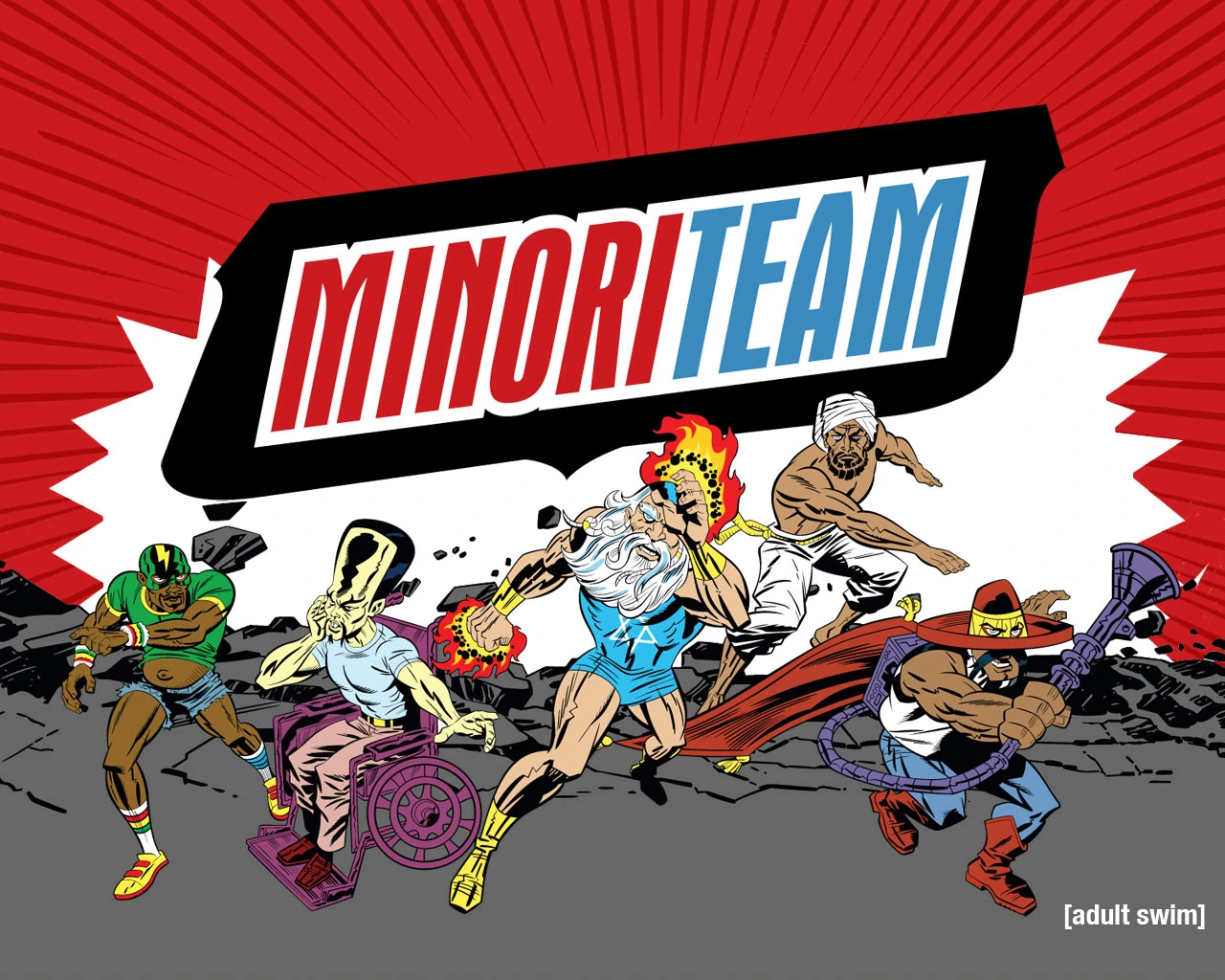
This colorful, action-packed animation lasted for one year and 19 episodes. Minoriteam, even despite this, created an impact with a cast of unique, distinctive characters engaging in varied pranks. “Minoriteam” aired on Cartoon Network’s late-night Adult Swim lineup in March 2006. It’s the geeky invention of a bi-coastal trio of accomplished artistic misfits who share a passion for the 1960s and 1970s-era Marvel superhero comics.
Girardi, James, and Pea were well aware that they would face criticism from the media and audiences for the controversial material of “Minoriteam.” But, they emphasize, from the beginning to the very end, that they were never requested to scale back or censor any of the material by Adult Swim’s executives.
The program was created to shock viewers with a heady mix of crude imagery and insightful racial criticism – liberally peppered with the hilarious and ludicrous story twists that Adult Swim followers have come to enjoy. On one end of the range comes Aaron McGruder’s “Boondocks,” with its vibrant animation, political complexity, and dark cynicism; on the other end is the immensely popular “Aqua Team Hunger Force,” which features a talkative wad of meat.
The entire program is a mix of a tribute to comic book legend Jack Kirby and Dave Chappelle’s humor, daring to go where other shows would not. Even if you do not really understand some of the humor, if you have an open mind, you’ll likely find yourself chuckling more frequently than not.
The program satirizes Marvel-style superhero adventures, but its cast of characters is based on obvious racial and ethnic prejudices. Minoriteam would make for an awesome comeback with its exciting, inventive idea, social satire, and daring sense of humor. It would almost certainly appeal to some of the thousands of Marvel as well as DC fans searching for a lighter perspective on their beloved franchises.
Adult Swim, which debuted in 2001 as just a late-night spinoff of Cartoon Network, has flourished by providing outlandish, off-color, and just downright odd programming. The quirky, seemingly specialized programs in which it excels appear to attract considerably fewer people than the more popular comedy of perhaps Seth Meyers or even Jon Stewart, at least on paper.
Adult Swim appears to flourish because its fans know they can rely on it to delight them and provide them with something new and intriguing. Creators that have worked with the channel, like Rick and Morty’s Dan Harmon, also have praised the network’s creative flexibility and amount of support. Similarly, Adult Swim trusts its audience to discover their programs without the help of multi-million-dollar marketing initiatives, which gives the shows their much-needed creative freedom and helps them stand out from the rest.
